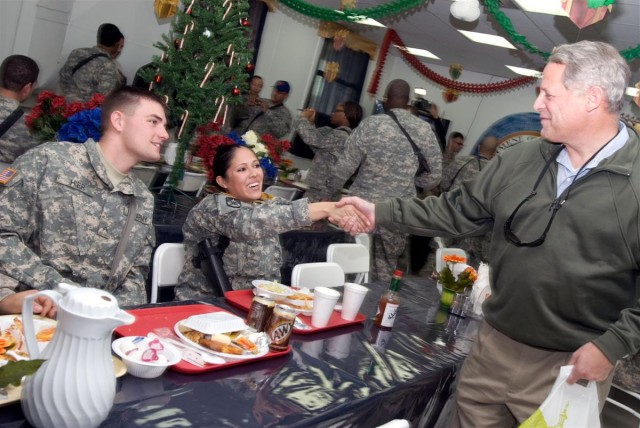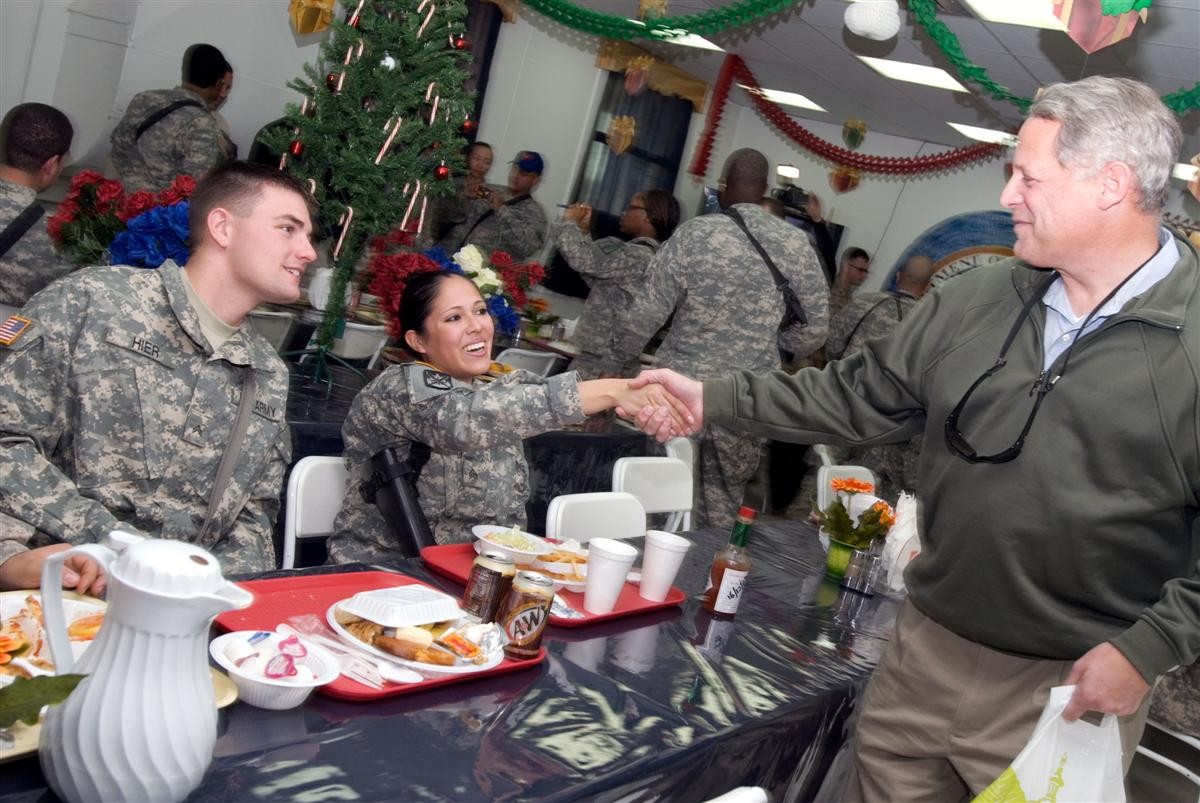
AL ASAD AIR BASE, Iraq - There are approximately 20,000 dual military married couples in the Army today, where both partners must make sacrifices in service of their nation.
To the Fort Drum Soldiers of the 548th Combat Sustainment Support Battalion here, they were known simply as the Hiers, one of several hundred dual military married couples serving throughout Iraq.
Sgt. Laura M. Hier and Cpl. Arthur H. Hier, Headquarters and Headquarters Company, 548th CSSB, from Fort Drum, N.Y., started dating in Korea in 2006. However, the couple's tours were set to end within a few months, and both Soldiers were to be reassigned to different units.
"We wanted to see where the relationship was going," said Arthur, of Syracuse, N.Y. "We had the feeling that it was going to go far, if we let it go far."
The couple took the plunge, married in Korea and then filed for joint domicile residence under the Military Army Couples Program. The MACP attempts to station married couples at duty stations within 100 miles of each other, and almost 80 percent of dual military couples are accommodated under the program, according to an article available on http://usmilitary.about.com.
However, the rules change when dual military married couples deploy overseas, said Chief Warrant Officer 3 Edwin Perez-Montalva, a human resource technician for 3d Sustainment Command (Expeditionary).
While in the past co-habitation by men and women was prohibited in theater, Perez-Montalva, of Guanica, Puerto Rico, said an exception to that policy was made by Multi-National Corps-Iraq in 2005. According to that exception, if dual military married couples are deployed to the same base, then they may reside together.
"It is not a guarantee that just because you deploy with your significant other that you will be assigned to the same (forward operating base) doing the same job," he said. A commander's intent, the availability of quarters and the mission will always take priority, he said.
Arthur said he was fortunate to get Laura reassigned to the same unit once they knew they were deploying to Iraq. Securing a containerized housing unit together was a simple exercise in paperwork, he said.
What paperwork dual military married couples might need to submit could vary from base to base, from unit to unit, and between services, Perez-Montalva said. The Hiers needed to submit a request with their unit, who then had to go through the housing office, which was managed by Marines with their own administrative requirements.
Perez-Montalva recommends that units scheduled to deploy should identify their dual military married couples as soon as possible. Couples should be identified on unit housing plans, especially once they are in Kuwait completing their final training prior to movement into theater..
However, Perez-Montalva said this is still not a guarantee that spouses will deploy together or even get assigned to the same base.
Although they do not plan to re-enlist, the Hiers said they are proud of their service. Their time in Iraq only strengthened their marriage, giving them another common bond.
Arthur's advice to other dual military married couples, especially if they happen to be living and working together, was simple.
"In order to deal with anything out here," he said, "you got to separate from your work when you come back to your CHU. Don't take it home with you."

Social Sharing